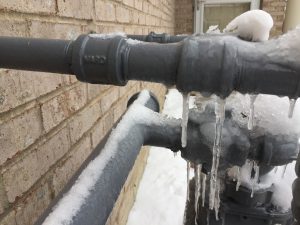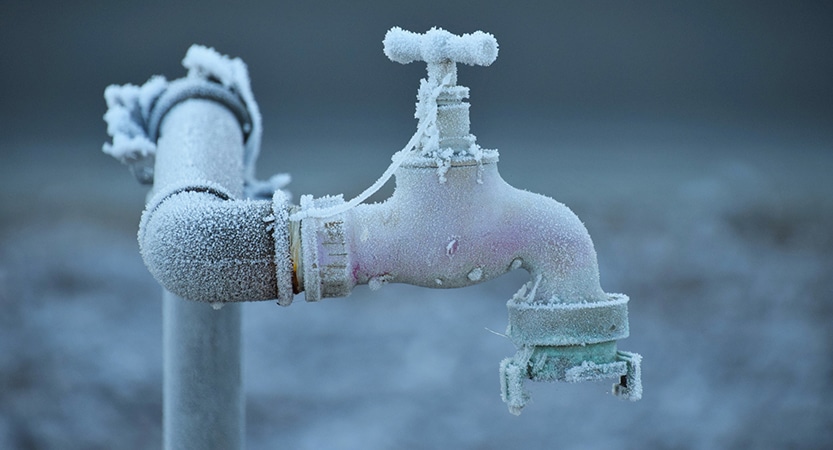Protecting Against Frozen Plumbing: Best Tips for Cold Weather
Protecting Against Frozen Plumbing: Best Tips for Cold Weather
Blog Article
Do you find yourself trying to find details on Prevent Frozen Pipes ?

Cold weather can damage your plumbing, specifically by freezing pipes. Here's how to prevent it from occurring and what to do if it does.
Intro
As temperatures decline, the danger of frozen pipelines increases, potentially causing pricey fixings and water damages. Recognizing just how to avoid icy pipes is critical for property owners in cold environments.
Comprehending Frozen Pipes
What causes pipelines to ice up?
Pipes freeze when subjected to temperatures listed below 32 ° F (0 ° C) for prolonged durations. As water inside the pipelines ices up, it expands, putting pressure on the pipe walls and potentially creating them to break.
Threats and damages
Frozen pipes can cause water supply disturbances, home damage, and pricey repair services. Burst pipes can flooding homes and trigger comprehensive architectural damages.
Indications of Frozen Pipeline
Recognizing frozen pipelines early can avoid them from rupturing.
Just how to determine icy pipelines
Search for lowered water circulation from faucets, unusual odors or noises from pipelines, and visible frost on subjected pipelines.
Avoidance Tips
Protecting prone pipelines
Wrap pipes in insulation sleeves or utilize warmth tape to safeguard them from freezing temperature levels. Focus on pipes in unheated or outside areas of the home.
Home heating methods
Maintain interior rooms effectively heated, specifically locations with plumbing. Open up cupboard doors to allow warm air to distribute around pipes under sinks.
Protecting Outside Pipes
Garden hose pipes and outdoor faucets
Detach and drain yard hose pipes prior to winter. Mount frost-proof spigots or cover outside taps with insulated caps.
What to Do If Your Pipelines Freeze
Immediate actions to take
If you believe icy pipelines, keep taps open to alleviate pressure as the ice thaws. Utilize a hairdryer or towels soaked in hot water to thaw pipelines gradually.
Long-Term Solutions
Structural modifications
Consider rerouting pipelines far from outside wall surfaces or unheated locations. Add additional insulation to attics, basements, and crawl spaces.
Updating insulation
Purchase top quality insulation for pipelines, attic rooms, and walls. Appropriate insulation helps preserve consistent temperatures and minimizes the threat of frozen pipes.
Conclusion
Protecting against icy pipes calls for aggressive measures and quick reactions. By understanding the reasons, indications, and safety nets, property owners can protect their plumbing during winter.
6 Proven Ways to Prevent Frozen Pipes and Protect Your Home
Disconnect and Drain Garden Hoses
Before winter arrives, start by disconnecting your garden hoses and draining any remaining water. Close the shut-off valves that supply outdoor hose bibs and leave the outdoor faucet open to allow any residual water to drain. For extra protection, consider using faucet covers throughout the colder months. It’s also important to drain water from any sprinkler supply lines following the manufacturer’s directions.
Insulate Exposed Pipes
Insulating your pipes is an effective way to prevent freezing. Pipe insulation is readily available at home improvement stores and is relatively inexpensive. Pay close attention to pipes in unheated areas such as the attic, basement, crawl spaces, or garage. Apply foam insulation generously to create a buffer against the cold. You can also wrap your pipes in heat tape or thermostat-controlled heat cables for added warmth.
Seal Air Leaks
Inspect your home for any cracks or openings that could let in cold air. Seal any holes around the piping in interior or exterior walls, as well as the sill plates where your home rests on its foundation. Additionally, make sure to keep your garage door closed unless you’re entering or exiting. Leaving it open creates a significant air leak that can lead to frozen pipes.
Allow Warm Air Circulation
During cold snaps, it’s essential to allow warm air to circulate evenly throughout your home. Leave interior doors ajar to promote better airflow. Open kitchen and bathroom cabinets to help distribute heat consistently around the rooms. If you have small children or pets, be sure to remove any household chemicals or potentially harmful cleaners from open cabinets for safety.
Let Faucets Drip
A small trickle of water can make a big difference in preventing ice formation inside your pipes. When temperatures drop significantly, start a drip of water from all faucets served by exposed pipes. This continuous flow helps prevent the water from freezing. Additionally, running a few faucets slightly can relieve pressure inside the pipes, reducing the chances of a rupture if the water inside does freeze.
https://choateshvac.com/6-proven-ways-to-prevent-frozen-pipes-and-protect-your-home/

I was shown that article about Winter Plumbing Precautions: Preventing Frozen Pipes through someone on a different domain. Remember to take a moment to promote this write-up if you appreciated it. I appreciate your readership.
Free Estimates Report this page